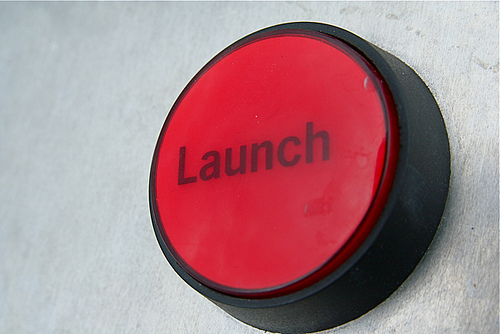Just released or about to release a mobile app? Do you have a checklist of which metrics you should be tracking?
Deciding which metrics to track is simply deciding which questions you want to answer. And the key is in asking the right questions.
Getting information about your app usage shouldn’t be like this.
1. User Acquisition
The main activity after launch is user acquisition. Even if you are flying under the radar to iron out bugs and optimize primary user flows, testing main acquisition channels should still be a big part of post-launch ops.
- Which channels are getting you the most users?
- What is the average acquisition cost per user of each channel?
- Which channels to focus early marketing efforts & budget at? (a combination of low cost + quantity and quality of users)
- Which channel was a particular user acquired from? Being able to identify this later becomes important in knowing which channels are driving the most valuable (loyal, paying, etc.) users
2. Retention
Retention tells you whether your users are coming back, or leaving you. Issues with retention, unless fixed immediately, can quickly translate into a survival problem for the app.
- What is your retention? D7 and D30 retention are popularly quoted numbers, but make sure they are the right numbers for your app. If your app is a messaging app, D2 retention is more important: you want your users to chat with their friends the next day, not 7 days later.
- Does any acquisition channel have a significantly lower average retention rate for users from that channel than from the other channels? If so, early marketing efforts are better focussed on the other channels.
- How are your users coming back to your app? Does some other app drive them to your app (like how tapping on an Instagram URL in the Twitter app opens the Instagram app)? A notification from your app? See if you can leverage that channel to further improve retention. A word of caution: there may be overlap and double counting here, if the same user comes back to your app from different channels at different times.
- When looking at retention rates over multiple days: D1, D2, D3, D4, etc, is there a cliff on any day where a large % of your users drop off and never come back?
3. Engagement
Engagement metrics tell you more about your retained users – how loyal they are and what keeps them loyal.
- How often does a user open your app? The number of active days in a week or the number of sessions per week are good indicators to distinguish between your most loyal users and less loyal users.
- How long does a user stay engaged with your app? Measuring this using a count of actions or progress in your app is more useful than actual time spent.
- What are the most popular actions carried or content consumed by users?
- Or any actions that you thought would be popular but aren’t? It is important to quickly validate assumptions about user behavior made while designing the app.
4. Revenue
If you are charging users for subscriptions or in-app items, revenue metrics become even more important to track upfront. You need to be able immediately identify problems and fix them before the revenue loss adds up.
- Conversion rates: what % of users become paid users?
- Compare average conversion rates for users from each acquisition channel. Is any acquisition channel performing significantly worse than others with regards to this metric?
- What % of your payers pay a second time? How much time (or sessions or progress) in between their first and second payments?
- What are the retention and engagement numbers for the payers? How is it different from non-paying users?
It may be useful to start tracking LTV (Lifetime value) of users and keeping tabs on the gap between the early LTV and user acquisition costs. The goal would be to close the gap as soon as possible.
Virality is another big area to keep track of, if your app has viral loops, and we will address that in a later post.


